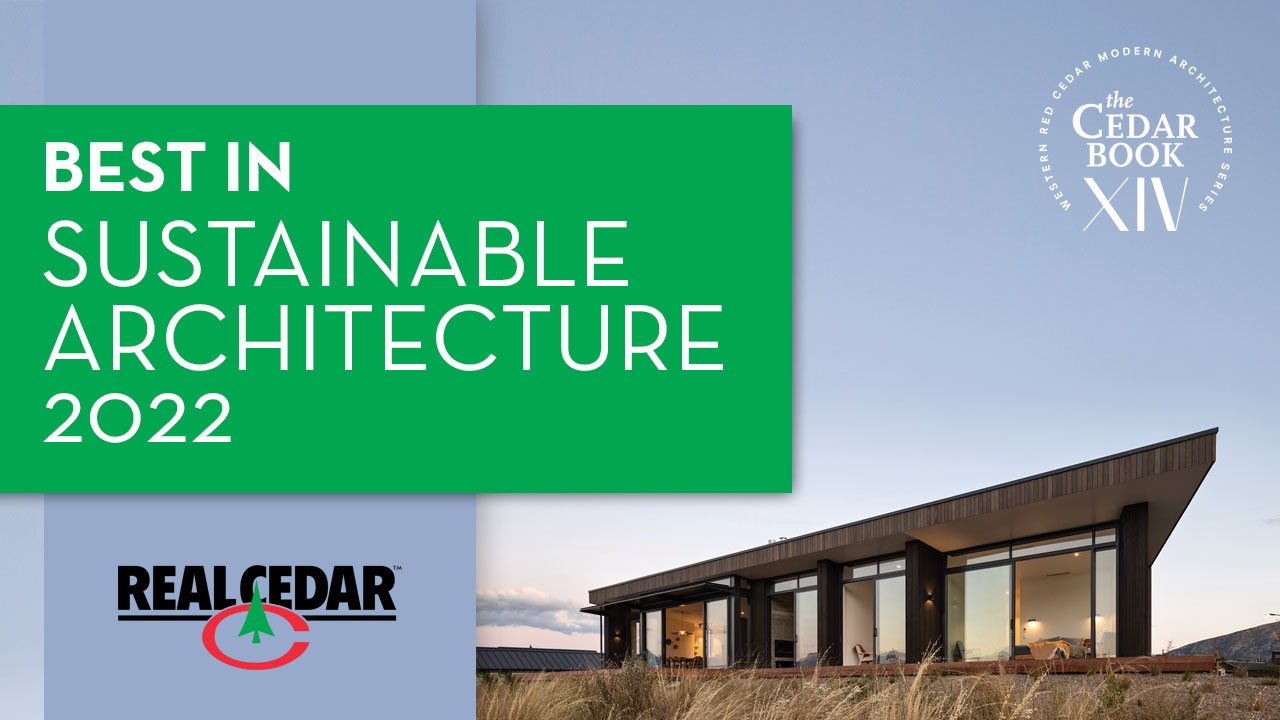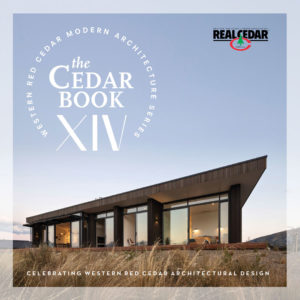Back
Back
Back
Back
Back
Back
Back
Back
Back
Back
USA & Canada
Sustainable Architecture & Green Building

Sign up now for our DIY Project Newsletter
Cedar Book XIV Celebrates Another Year of Excellence in Wood Design
The Western Red Cedar Lumber Association recently published its 14th edition of the Cedar Book. As with previous years, this latest publication honors the best in sustainable architecture & green building.
Showcasing Real Cedar’s versatility, the book features a mix of residential and non-residential projects from all over the world. It also features a range of modern and traditional styles in both exterior and interior applications. Take Portland’s Pine Street Duplex, for example. Architect Webster Wilson used a beautiful knotty grade of cedar siding to temper the modern masses of this multifamily structure. “There is a lovely texture and unique character that comes with a knotty grade, which also happens to still be cost-effective,” says the award-winning architect.
The Ridgewood Residence meanwhile, is a reinvented mid-century home designed by Matt Fajkis Architecture. For this project, the Texan firm used a crisp clear grade of cedar to honor the area’s retro design roots.
In both these cases, the architects finished the cedar in a natural finish. But since Real Cedar is pitch and resin free, many of the featured architects took advantage of how beautifully the wood accepts and holds a wider range of finishes. This includes everything from grey weathering stains, to Shou Sugi Ban treatments to dramatic dark and light combinations, as in the case of the Bluebonnet Residence.
Specifying Material for Sustainable Architecture
Every architect featured in the book chose nature’s most versatile material for its inherent beauty and performance properties. But they also cited the environment as one of the main motivating factors for specifying Real Cedar. Like mast eco-minded building professionals, they know cedar is a renewable resource harvested from some of the most sustainably managed forests in the world.
“The fact that we can use such a beautiful material that also captures carbon is another reason why I chose to use cedar throughout the home,” says architect Brett Farrow whose 605 Cornish project features cedar throughout.
Bluebonnet architectural designer, Mark Simone echoes that sentiment: “Cedar cladding felt like a natural choice due to its low carbon footprint and for its natural aesthetic qualities.”
Green Building Interiors that Connect to Nature
As Biophilic design gains traction, we’re also seeing more Real Cedar interior applications. This movement is reflected in this year’s book. Tetsuya Fukuda’s medical clinic in Japan, for example, includes a cedar soffit/ceiling system. This strategic use of cedar in this context creates a warm and welcoming, healthy environment for occupants.
“This helps patients relax and forget about their pain and illness,” says Fukuda of cedar’s biophilic characteristics. “I’m always glad to hear that people coming to the clinic feel calm and cozy.”
If you see any siding options in the video version that you’d like to recreate for your clients or have a question about how to specify and/or install Real Cedar for sustainable architecture & green building projects, visit our resource page. Our technical experts are more than happy to answer any questions and send you samples free of charge.
© 2025 All rights reserved
Gatsby Website Development by Jambaree
